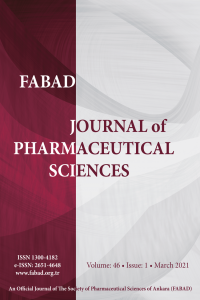Mucoadhesive Drug Delivery Systems for Pediatric and Geriatric Patients
Mucoadhesive Drug Delivery Systems for Pediatric and Geriatric Patients
A mucoadhesive drug delivery system (MDDS) has been a smart approach to the delivery of drugs at the target site. In MDDS mucus membrane and type of polymer plays an important role in the mucoadhesion phenomenon. To explain the mechanism behind mucoadhesion, various theories have been proposed such as electronic, adsorption, wetting, diffusion, and fracture theory. MDDS has been beneficial to some special patients, preferably pediatric and geriatric. Several challenges such as taste masking, dose determination, dosage form spitting, target delivery, the bioavailability of the drug, adverse drug reaction, toxicity, etc. are faced while developing any delivery system for these special patient populations. Keeping these challenges in mind several researchers have attempted to design and formulate MDDS according to their convenience. The current review focuses on a basic overview of mucoadhesion, various theories of mucoadhesion, and mucoadhesive polymers. The later part of the review focuses on the MDDS for pediatric and geriatric patients with their significance. Various patented formulations and clinical trials going on for these populations have also been discussed.
Keywords:
mucoadhesive, pediatric, geriatric,
___
- Francois M, Snoeckx E, Putteman P, Wouters F, De Proost E, Delaet U, Peeters J, Brewster ME.,(2003). A mucoadhesive, cyclodextrin-based vaginal cream formulation of itraconazole. Aaps Pharmsci., 5(1):50-4.
- Freerks, L.; Soulou, E.P.; Batchelor, H.; Klein, S.,( 2019). A review of GI conditions critical to oral drug absorption in malnourished children. Eur.J. Pharm. Biopharm., 137, 9-22.doi: 10.1016/j. ejpb.2019.02.001
- ISSN: 1300-4182
- Yayın Aralığı: Yılda 3 Sayı
- Başlangıç: 2005
- Yayıncı: FABAD Ankara Eczacılık Bilimleri Derneği
Sayıdaki Diğer Makaleler
Anticancer Potential of Novel Nanoemulgel Formulations in Melanoma
Metabolomic Studies in Girls With Central and Peripheral Precocious Puberty
Aylin BALCI ÖZYURT, Tuba REÇBER, Emirhan NEMUTLU, Derya BULUŞ, Sedef KIR, Belma KOÇER GÜMÜŞEL, Pınar ERKEKOĞLU
Bercis İmge UÇAR, Muhammed Alperen TAŞ, Huseyin Emre ARSLAN, Mehmet Fatih EKİCİ, Sezgin ZEREN
Çağatay OLTULU, Melek AKINCI, Elvan BAKAR
Anayatollah SALİMİ, Ramin NOORAFROOZ, Maryam FOULADİ, Saeed MOHAMMAD SOLEYMANİ
NLRP3 expression in peripheral blood mononuclear cells of patients with rheumatoid arthritis
Sezen YILMAZ SARIALTIN, Orhan KÜÇÜKŞAHİN, Cemil NURAL, Leyla Didem KOZACI, Pınar KAYGIN, Gülçin GÜLER ŞİMŞEK, Serpil OĞUZTÜZÜN, Tülay ÇOBAN
